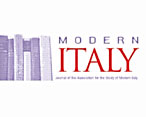| RIVISTA DI STUDI ITALIANI | |
| Anno XXV , n° 2, Dicembre 2007 ( Contributi ) | pag. 1-11 |
| FOOD AND FOOD IMAGES IN THE DECAMERON | |
| FRANK CAPOZZI | |
| Milwaukee, Wisconsin | |
|
Abstract: There is an old saying that man is what he eats, and the earthly materialistic characters of Boccaccio's Decameron spend a considerable amount of time eating delicious dishes and drinking wine. The Decameron is a mosaic of Medieval life, where each tessera -- the daily activities of the characters -- is mentioned and described by Boccaccio, though briefly, to enrich the realism of the story, and to heighten the appreciation of the composition, the novella itself. Eating and drinking are essential functions, not only for health and strength, but also for pleasure. As Madeleine Peiner Cosman affirms, "during the Middle Ages beyond mere ingestion for survival, food and food lore seems to define both person and culture. Since the medieval calendar alternated culinary correlatives: feast and fast, fast and feast; and since the medieval ecology interspersed famine amidst abundance, it is not surprising to find concern for food in literature and art" 1. In the Decameron Boccaccio employs food and food images to emphasize and illustrate not only characters and social classes, but also the comedy or tragedy of a story; however, one has to observe that, as Getto says, "la comicità non scaturisce mai dai cibi e dalle bevande, dal mangiare e dal bere"2. Key-words: Decameron, Ciappelletto, Cisti, Chichibio, gluttony, Ciacco, Calandrino, Federigo Alberighi, Abbott of Cligní, Marchesana di Monferrato, Bartolomea, Guglielmo Guardastagno, Guglielmo Rossiglione. |
|
| Registrati e acquista crediti per leggere l'articolo | |
| Oppure acquistalo subito con PayPal | |
LINKS


